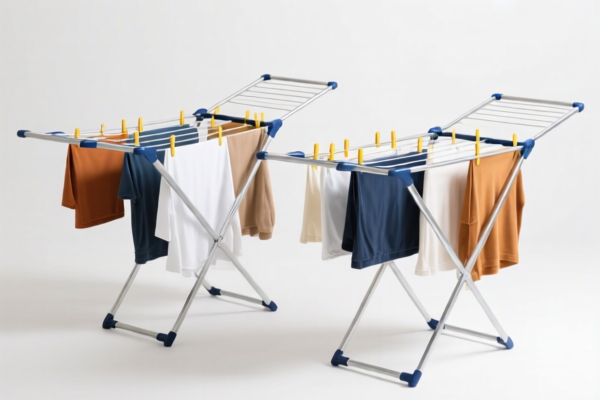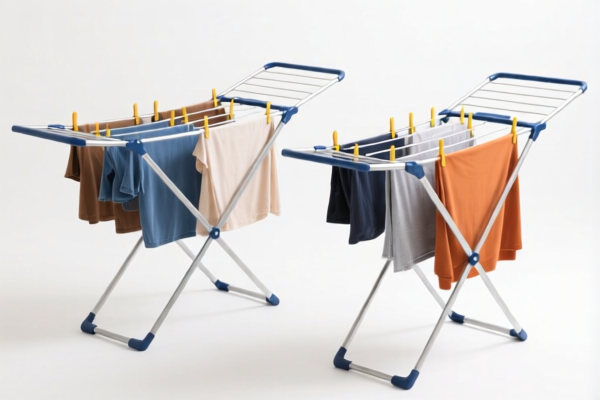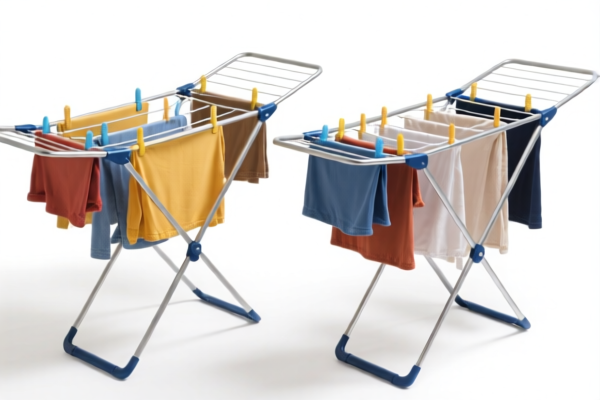| HS Code | Official Doc | Tariff Rate | Origin | Destination | Effective Date |
|---|---|---|---|---|---|
| 4421918800 | Doc | 30.0% | CN | US | 2025-05-12 |
| 4421998800 | Doc | 37.5% | CN | US | 2025-05-12 |
| 3926909930 | Doc | 42.8% | CN | US | 2025-05-12 |
| 9403999020 | Doc | 80.0% | CN | US | 2025-05-12 |
| 8302500000 | Doc | 80.0% | CN | US | 2025-05-12 |




Okay, let's break down the HS codes and tax implications for your "DRYING RACK" declarations. Here's a structured analysis to help you understand the classifications and potential costs.
Important Note: The tax rates provided are as of today and subject to change. The "2025.4.2后加征关税" (additional tariffs after April 2, 2025) are particularly important to keep in mind. Also, the specific material of your products will heavily influence the final tariff.
1. 4421.91.88.00 – Other articles of wood: Other: Of bamboo: Canoe paddles
- HS Code Breakdown:
- 44: Wood and articles of wood, charcoal. This chapter covers products made primarily of wood.
- 21: Other articles of wood. This narrows it down to wood articles not specifically covered elsewhere.
- 91: Other. Further specifies the type of wood article.
- 88: Of bamboo. This is the most specific classification, indicating the item is made of bamboo.
- Tax:
- Base Tariff: 0.0%
- Additional Tariff: 0.0%
- Total Tariff: 30.0% (after April 2, 2025)
- Considerations: This code is specifically for bamboo items. If your drying rack isn't made of bamboo, this is incorrect.
2. 4421.99.88.00 – Other articles of wood: Other: Other: Canoe paddles
- HS Code Breakdown: Similar to 4421.91.88.00, but this is for other wood articles not made of bamboo.
- Tax:
- Base Tariff: 0.0%
- Additional Tariff: 7.5%
- Total Tariff: 37.5% (after April 2, 2025)
- Considerations: Again, confirm the material. If it's not wood, this is incorrect.
3. 3926.90.99.30 – Other articles of plastics and articles of other materials of headings 3901 to 3914: Other: Other Ladders
- HS Code Breakdown:
- 39: Plastics and articles thereof. This chapter covers products made primarily of plastic.
- 26: Other articles of plastics.
- 90: Other.
- 99: Other.
- 30: Other Ladders.
- Tax:
- Base Tariff: 5.3%
- Additional Tariff: 7.5%
- Total Tariff: 42.8% (after April 2, 2025)
- Considerations: This code is for ladders made of plastic or other materials within headings 3901-3914.
4. 9403.99.90.20 – Other furniture and parts thereof: Parts: Other: Other Other: Of metal: Welded wire rack, whether or not galvanized, plated or coated
- HS Code Breakdown:
- 94: Furniture; bedding, mattresses, support, stuffing and similar articles; lamps, luminaires, lighting fittings and lighted signs, signalling, traffic control; prefabricated buildings.
- 03: Other furniture and parts thereof.
- 99: Parts.
- 90: Other.
- 20: Of metal.
- Tax:
- Base Tariff: 0.0%
- Additional Tariff: 25.0%
- Total Tariff: 80.0% (after April 2, 2025)
- Considerations: This code is for metal parts of furniture. The high tariff (25% additional) is significant. Crucially, confirm the metal type. Steel and aluminum may have specific additional tariffs.
5. 8302.50.00.00 – Base metal mountings, fittings and similar articles suitable for furniture, doors, staircases, windows, blinds, coachwork, saddlery, trunks, chests, caskets or the like; base metal hat racks, hat pegs, brackets and similar fixtures; castors with mountings of base metal; automatic door closers of base metal; and base metal parts thereof: Hat-racks, hat pegs, brackets and similar fixtures, and parts thereof
- HS Code Breakdown:
- 83: Miscellaneous articles of base metal.
- 02: Base metal mountings, fittings and similar articles.
- 50: Hat-racks, hat pegs, brackets and similar fixtures, and parts thereof.
- Tax:
- Base Tariff: 0.0%
- Additional Tariff: 25.0%
- Total Tariff: 80.0% (after April 2, 2025)
- Considerations: This code is for metal fixtures. Similar to 9403.99.90.20, the high tariff is a concern. Confirm the metal type. Steel and aluminum may have specific additional tariffs.
Recommendations & Next Steps:
- Material Verification: The most important step. Precisely identify the primary material of each drying rack. This will determine the correct HS code.
- Metal Type: If metal, determine the exact alloy (steel, aluminum, etc.). This impacts tariffs.
- Functionality: Is it a complete drying rack, or a part of one? This will help differentiate between codes like 9403 and 8302.
- Detailed Product Description: Provide a very detailed description of each item to your customs broker.
- Certifications: Depending on the destination country, you may need certifications (e.g., for safety, material composition).
- Consult a Broker: I strongly recommend working with a licensed customs broker in the destination country. They can provide definitive HS code classifications and ensure compliance.
- Tariff Updates: Monitor tariff changes, especially regarding the April 2, 2025, additional tariffs.
Disclaimer: I am an AI and cannot provide legally binding customs advice. This information is for general guidance only. Always consult with a qualified customs professional.
Customer Reviews
The site is a good start, but a bit confusing when it comes to metal drying racks. The tariffs listed for codes 9403.99.90.20 and 8302.50.00.00 are very high, and I’m not sure which one applies to my product.
I appreciate the detailed breakdown of each HS code. It really helps to understand *why* a specific code is assigned. The note about verifying the material is a great reminder – something often overlooked!
Excellent resource! I was stuck trying to figure out the correct code for plastic drying racks, and 3926.90.99.30 looks like a perfect match. The tax information, including the April 2nd changes, is a huge time-saver.
I found the HS code information for drying racks really helpful, especially for exporting to the US. The breakdown of code 4421.91.88.00 and the related tariffs was clear, though I wish it had more examples.